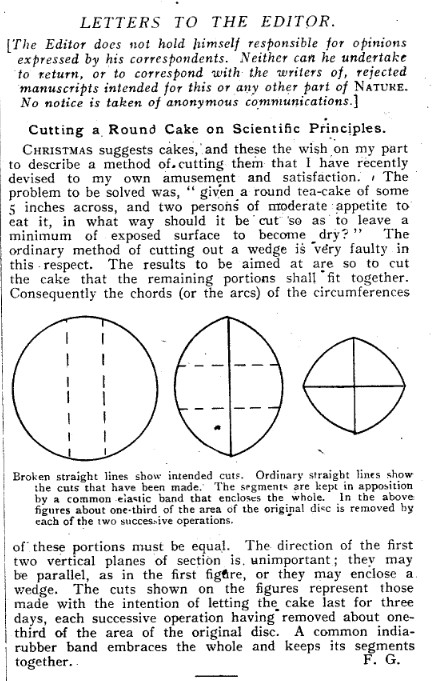Cutting a Cake: 1906 Instructions Based on Scientific Principles
Purely for fun, Sir Francis Galton, (FRS, knighted in 1909), described in the publication Nature in 1906 how to cut a cake in a way “so as to leave a minimum of exposed surface to become dry”. Essentially, you cut out the middle, push the remaining cake halves together. Then, you keep cutting the center parts and pushing the remainder together to as to keep the center moist. Have we been doing it all wrong?

From Sir Francis Galton, 1906:
Cutting a Round Cake on Scientific Principles.
Christmas suggests cakes, and these the wish on my part to describe a method of cutting them that I have recently devised to my own amusement and satisfaction. The problem to be solved was, “given a round tea-cake of some 5 inches across, and two persons of moderate appetite to eat it, in what way should it be cut so as to leave a minimum of exposed surface to become dry?” The ordinary method of cutting out a wedge is very fault in this respect. The results to be aimed at are so to cut the cake that the remaining portions shall fit together. Consequently the chords (or the arcs) of the circumferences of these portions must be equal. The direction of the first two vertical planes of section is unimportnat; they may be parallel, as in the first figure, or they may enclose a wedge. The cuts shown on the figures represent those made with the intention of letting the cake last for three days, each successive operation having removed about one-third of the area of the original disc. A common india-rubber band embraces the whole and keeps its segments together.
You must be logged in to post a comment.